Vampires (Part II)
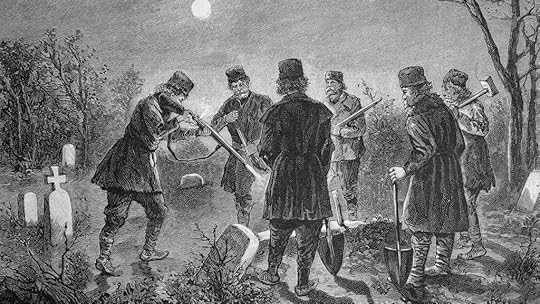
Last week we discussed how the myth of vampires was made famous by writers like Bram Stoker taking inspiration from historic figures such as Vlad the Impaler. There is another more medical explanation to vampirism. It even caused a region-wide panic in the United States during the 1730’s.
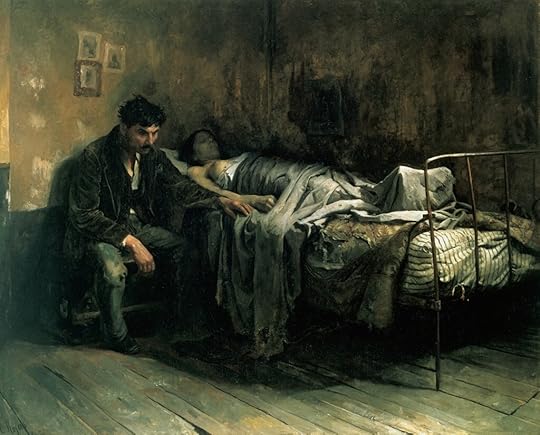
During the 1730’s, people of New England believed that a mysterious force was coming back from the dead to take down loved ones. As seen in many vampire myths, one person would start wasting away, showing signs of weakness, pale skin, and even bleeding from their face.
Once one person in the family became sick, many others would follow. It was thought that the original was coming back from their grave to drain the life from their family members.
Looking back on these symptoms, we realize now, the afflicted were suffering from consumption – now called Tuberculosis.
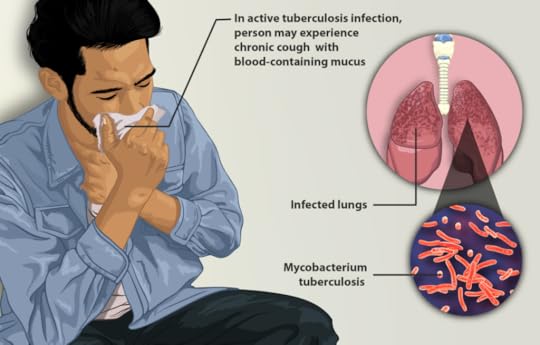
In the early 1700’s, Tuberculosis was not a known disease. In fact, the bacteria causing the sickness would not be identified until 1882. During this time, TB killed one out of every seven people living in the United States and Europe. It is not hard to see how this would strike fear in the stricken populations.
Tuberculosis is caused by Mycobacterium tuberculosis (MTB) bacteria. It generally affects the lungs, but can also cause damage to other parts of the body. Most infections show no symptoms, but can spread the bacteria. Symptoms of active cases include chronic coughing with bloody mucus, fever, night, sweats, and weight loss. It was called Consumption due to the weight loss seen in many patients.
Those at highest risk to contract the disease are those that share household, workplace, and social contacts of people with active TB.

Examining the symptoms of TB and comparing the usual markers of a vampire, we can see a large number of overlap. The pale bodies, blood, and wasting body can all be drawn back to those afflicted with TB. The thought that vampires prey on loved ones can also be tied to TB.
As noted, those most in danger of contracting the disease are those sharing space with an active case. Once one person in the household became sick, the others would likely fall ill as well. TB is a deadly disease without the treatments we have today. It was fatal to many who contracted it.
This led to the New England Vampire Panic.

The panic raged along with the tuberculosis outbreak in Rhode Island, eastern Connecticut, Vermont, and other parts of New England. States dealt with the panic in different ways, but to stop the attacks many bodies were exhumed and mutilated.
To prove that the deceased were in fact vampires, their bodies were exhumed. They would look for evidence of movement in the coffin and growth of their hair and nails. If they found evidence of this, it was a sign that they had returned from beyond.
In some cases, such as Mercy Brown in Rhode Island, they found she had “turned in the grave.” Experts say this was due to muscle spasms after death. Mercy Brown was buried in the middle of winter and not exhumed until after thaw. It is believed her body twisted during this, leaving her sitting oddly in her coffin.
Due to the New England Vampire Panic, the idea that your hair and nails grow after death became prevalent. It was thought this phenomenon was happening and that is what the exhumers were seeing. However, as the body decays, the skin pulls away from the nail and hair. This gives the appearance that the body continued growing after death.
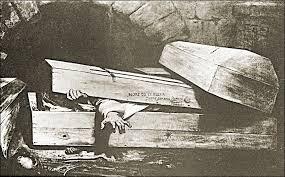
Evidence of movement and growth were not the only signs the panic villagers looked for to confirm vampiric activity. They would cut into the heart and look for “fresh blood.” It is not defined what qualified as fresh blood. From reports, it can be inferred if blood was present, it was enough to be considered evidence of vampiric activity.
After checking for evidence of vampiric activity, the villagers had to then take care of the demon residing in the deceased to save the remaining family members.
The heart was exhumed from the body and burned. This was done to kill the demon and prevent its nightly stalking. In some cases, the askes of the heart were mixed with water to give to the afflicted family members to drink. Others were forced to breathe in the smoke from the burning body.
If the exhumation did not work and the family was still falling ill, it was believed that the demon had not been found. There was another family member haunting them.

Cases where the body was decayed or the heart was not present did not stop the frightened villagers. In these cases, the head was removed from the body. Garlic was stuffed in the mouth and the head was placed between the legs. The body was then staked to the coffin for good measure.
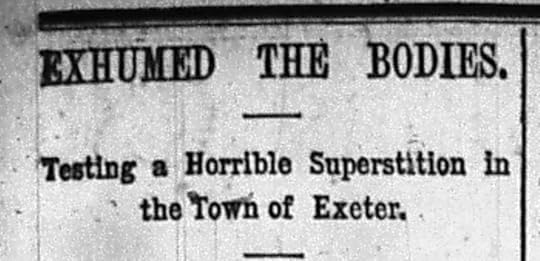
The panic ended as the pandemic died in the town. The superstitions were calmed in the towns. Many newspapers reported that these practices were enacted by “the uneducated” and seen as “viscous.” Even at the time it was considered an old superstition, but that did not stop 11 recorded exhumations and mutilations.
Sources:
https://www.who.int/news-room/fact-sheets/detail/tuberculosis
https://www.cdc.gov/tb/worldtbday/history.htm
https://salemghosts.com/the-new-england-vampire-panic/
Tucker, Abigail. “The Great New England Vampire Panic”. Smithsonian magazine (October 2012).
You can learn more from:
Morbid Podcast: Episode 264 The New England Vampire Panic
Distillations Podcast: Vampire Panic (Jun 28, 2021)



